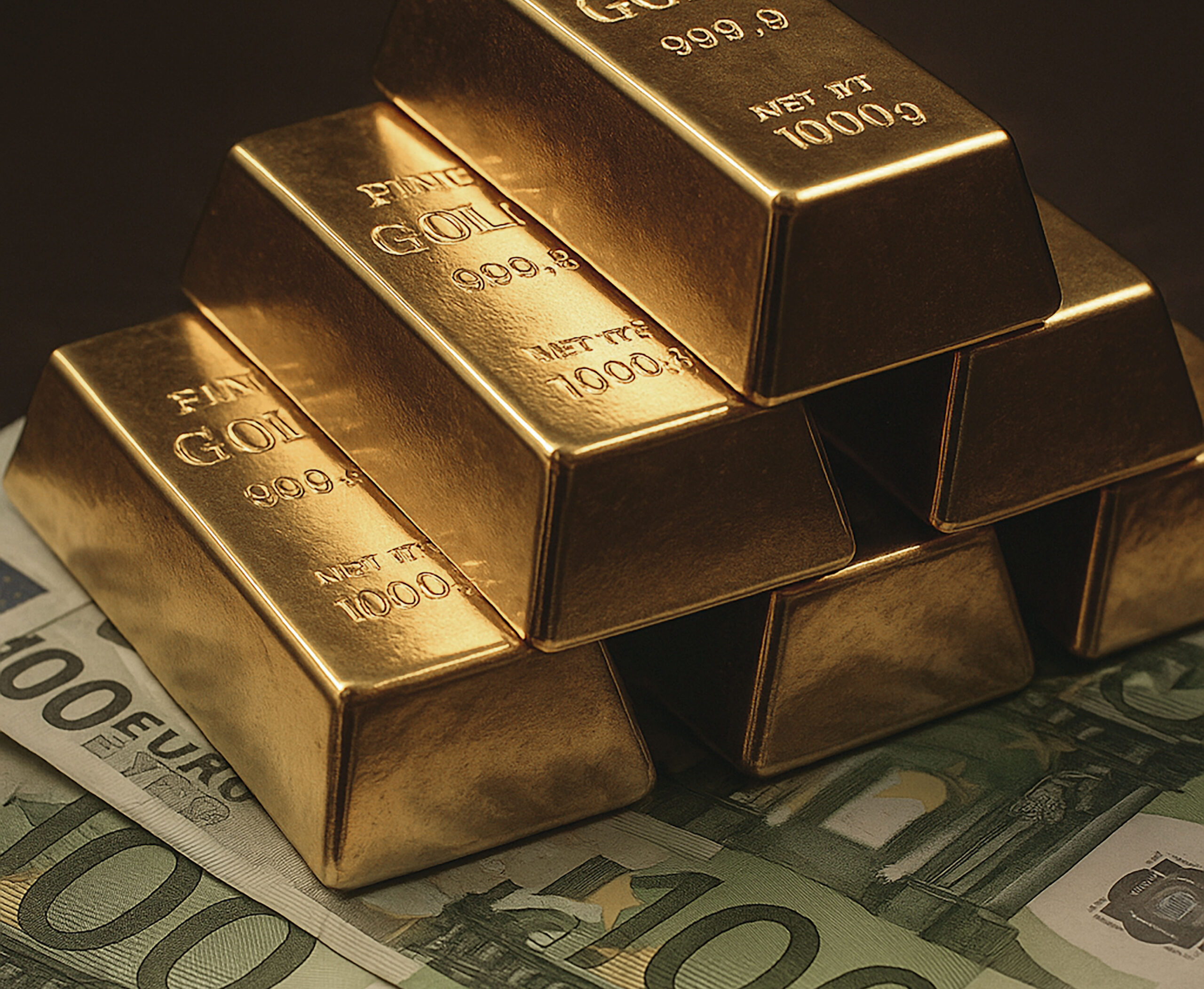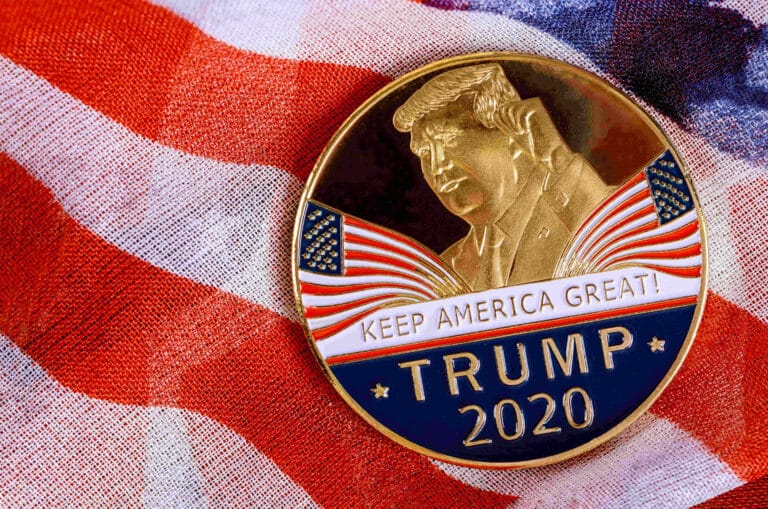Gold Overtakes the Euro
The second most important reserve asset in the world is no longer the euro, nor any of the BRICS bloc currencies, but simply gold.
News of the yellow metal’s success recently swept through economic outlets around the globe, sparking joy in some and frustration in others.
It Was Bound to Happen
Thanks to steadily rising prices and recent aggressive purchases by central banks, gold now accounts for 20 percent of all global reserves. The dollar remains in first place (46 percent), and the euro has dropped to third (16 percent). This shift had been anticipated for some time. After central banks purchased 1,082 tons of gold in 2022 and 1,037 tons the following year, the metal’s share rose first to 17, then to 18 percent. At the same time, the euro’s trend has been steadily downward. Starting at a 20.5 percent share in 2022, the common European currency has been consistently losing ground, until the symbolic overtaking finally occurred.
Gold overtaking the euro is, of course, not irreversible. It could soon turn out that falling gold prices or a policy shift by some central banks could change everything rapidly. The dollar’s condition could also play a role—despite its current dominance, growing concerns about fixing the U.S. public finances may weaken its position in favor of other major currencies.
Poland in Unexpected Company
Who exactly is responsible for gold’s successful assault on second place? Since January 1, 2020, the largest purchases have been made by the central banks of: China (409 t), Poland (316.5 t), Turkey (308 t), India (211 t), Uzbekistan (94.5 t), and Singapore (92 t). The top ten also includes the Czech Republic, but the main buyers are dominated by entities from outside the Western world.
Poland’s place in this elite group is owed largely to Adam Glapiński, who—regardless of other errors (mainly during the pandemic period)—has already earned a spot in Polish history. Since May of this year, Poland has held more gold reserves than the entire European Central Bank. However, Poland’s efforts to build a lasting foundation for its monetary system are an anomaly compared to most European and Western nations.
Eurozone central banks have focused in recent years mainly on asset purchases under the Asset Purchase Program (APP) and the Pandemic Emergency Purchase Program (PEPP). To put it more plainly, European central banks undertook massive financial injections into both the corporate and governmental sectors as a form of economic stimulus.
Poland clearly made a better investment. It may not have globally significant corporations to support through such programs, but it is at least wisely allocating its accumulated capital. Poland has also smartly refrained from adopting the euro, and given its increasing weakness, this supports a scenario in which the złoty need never be abandoned.
Massive gold purchases by central banks of countries rivaling the West are clearly aimed at undermining the dollar’s dominance. If 1,000 tons of gold were to continue to be purchased annually, dethroning the U.S. currency could take about 30 years at current prices. However, with rapidly rising gold prices and the dollar’s gradual loss of credibility, the shift could occur much sooner.
Reasons for Concern
The European Union, however, has more pressing reasons for concern regarding its single currency. Unlike the United States, which under Donald Trump’s leadership is attempting to rebound and has freed itself from the constraints of climate policy, Europe still shows no signs of where salvation might come from.
The European Commission, led by Ursula von der Leyen, is pushing an extreme version of green policy, causing a mass exodus of businesses to other parts of the world.
The increasingly evident weakening of the European Union—now also apparent in the currency sphere—may, unfortunately, push its leaders toward even more radical actions. In the near future, Eurocrats will likely be even more determined to accelerate the construction of a federal state by issuing joint debt. This determination was visible recently, for instance, during disputes with Donald Trump over the treatment of Ukraine and Volodymyr Zelensky. On the one hand, the EU signals a desire to rid Europe of U.S. presence and take on responsibility for its own security, but lacking the tools, it is forced into humiliating visits to the White House, such as the recent one by Friedrich Merz.
All signs suggest the euro’s decline as a global reserve currency will intensify, and gold will continue to strengthen its position. It has already reached a share of global reserves not seen since the 1960s. According to the World Gold Council, by 2026 we can expect central banks not only to maintain current gold purchase levels but even increase them. The only complication may be that such high demand could eventually raise gold prices, limiting some banks’ purchasing power. However, the main motivation behind these actions is clearly political.
In the official statement from the European Central Bank regarding gold overtaking the euro, the usual phrase was included, claiming that “the international role of the single currency remains stable.” Indeed, the euro has been steadily losing ground in global finance for years, and the more signals point to this gradual degradation, the more Brussels and Frankfurt officials try to obscure the truth with lifeless statements.
ECB Chief Economist Philip Lane, responding to the awkward development of gold surpassing the euro, simply encouraged the adoption of his proposal to issue “synthetic” eurozone bonds—a sort of portfolio of member-state bonds. This type of financial instrument, in his view, would increase the euro’s appeal by making it resemble U.S. Treasury bonds. However, there is little enthusiasm for such a solution in Europe, especially in countries that would be burdened with higher debt servicing costs.







